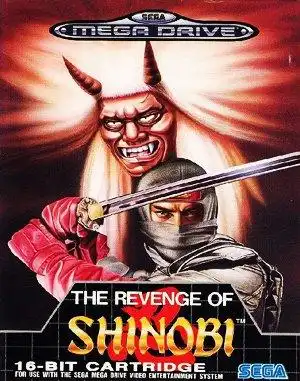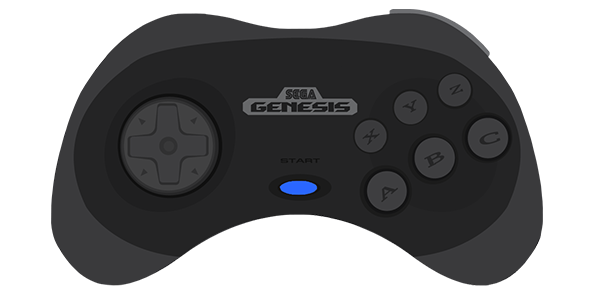Revisiting The Revenge of Shinobi on Sega Genesis
Remember the days when 16-bit graphics felt like the peak of visual fidelity and synthesized soundtracks were the stuff of legends? If you were a Sega Genesis kid, chances are you crossed paths with The Revenge of Shinobi. This wasn't just another action game; it was a statement, an early showcase of what Sega's "Blast Processing" machine could do, and a foundational title for the console's library.
Released in 1989, The Revenge of Shinobi (known as The Super Shinobi in Japan) threw players back into the high-kicking, shuriken-throwing boots of ninja master Joe Musashi. His mission? To rescue his kidnapped bride and avenge the death of his master at the hands of the Neo Zeed crime syndicate. Simple premise, complex execution, and an absolute blast to play.
Why It's a Sega Genesis Legend
The Revenge of Shinobi arrived relatively early in the Genesis's life cycle and immediately set a high bar. It felt faster, looked sharper, and sounded punchier than much of the competition at the time. It wasn't just an arcade port; it was a game designed for the home console, offering deeper levels and a more involved experience.
Its impact was significant, helping to define the early identity of the Genesis as the "cool," edgier console compared to Nintendo's family-friendly image. It was challenging, stylish, and featured a protagonist who embodied the burgeoning ninja craze of the late '80s and early '90s.
Gameplay: Ninja Skills on Full Display
Controlling Joe Musashi felt intuitive yet demanded precision. You had your trusty shurikens (infinite supply, but you could only throw a few at once unless you powered up), a devastating close-range sword slash (risky but powerful), a life-saving backflip, and a selection of powerful ninja magic (Ninjutsu).
The levels were varied, taking you from gritty urban streets and dojos to waterfalls, jungles, and even military bases. Platforming was key, often requiring careful jumps and timing. Enemies came in many forms, each with their own attack patterns, forcing you to adapt your strategy. And let's not forget the power-ups – extra shurikens, stronger attacks, and health boosts were always a welcome sight.
Boss Battles: The Infamous Cameos
Perhaps one of the most talked-about aspects of The Revenge of Shinobi then and now is its boss roster. Due to some... questionable licensing decisions (or lack thereof), early versions of the game featured bosses that bore striking resemblances to famous characters from popular culture. We're talking about foes that looked suspiciously like:
- Batman
- Spider-Man
- The Terminator
- Godzilla
These bosses were later altered in subsequent revisions of the game, making the original versions highly sought after by collectors. Fighting these recognizable, albeit legally dubious, figures added a layer of bizarre charm that's still fondly remembered. Beyond the cameos, the bosses themselves were creative and challenging, often requiring specific tactics to defeat.
Sound & Vision: Koshiro's Masterpiece
Visually, The Revenge of Shinobi was vibrant and detailed for its time. The character sprites were well-animated, and the environments, while sometimes repetitive, had distinct themes. The explosions and magic effects looked impressive.
But the true star of the presentation was the music, composed by the legendary Yuzo Koshiro. Using the Genesis's FM synthesis capabilities, Koshiro crafted one of the most iconic video game soundtracks ever. Tracks like "The Shinobi," "China Town," and "Make Me Dance" are instantly recognizable and perfectly capture the game's intense, action-packed atmosphere. It's a soundtrack that stands on its own and is a major reason the game is so beloved.
Why It Still Holds Up
The Revenge of Shinobi remains a fantastic game today for several reasons:
- Pure Gameplay: The core ninja action is solid and satisfying.
- Challenging Difficulty: It's tough but fair, rewarding practice and mastery.
- Incredible Soundtrack: Koshiro's music is timeless.
- Nostalgia Factor: For many, it's a key part of their Genesis memories.
- Historical Significance: It was a defining title for the console.
While later Shinobi games refined the formula (like the excellent Shinobi III), Revenge has a raw, groundbreaking quality that makes it uniquely special.
Playing The Revenge of Shinobi Today
Want to experience this classic slice of 16-bit history? You've got options beyond tracking down original hardware and cartridges (though that's an option if you have the budget!).
- Official Collections: The Revenge of Shinobi is frequently included in Sega Genesis/Mega Drive collections released on modern consoles (PlayStation, Xbox, Switch) and PC. These often include save states and other quality-of-life features.
- Emulation: Playing via emulators on PC or other devices is another popular method, allowing access to different ROM versions (including those with the original bosses).
- Sega Genesis Mini: It was included on the excellent Sega Genesis Mini console, offering a plug-and-play nostalgic experience.
However you choose to play it, taking on Neo Zeed as Joe Musashi in The Revenge of Shinobi is a retro gaming rite of passage.
FAQ
Is The Revenge of Shinobi a difficult game?
Yes, The Revenge of Shinobi is known for its challenging difficulty, requiring precise platforming, enemy pattern recognition, and careful use of Ninjutsu. It's part of its classic arcade-style appeal.
Who composed the music for Revenge of Shinobi?
The iconic soundtrack was composed by the legendary Yuzo Koshiro, known for his work on the Streets of Rage series and many other classic games.
Why were some bosses changed in later versions?
Early versions of the game featured bosses that closely resembled popular characters like Batman, Spider-Man, and Godzilla, likely without proper licensing. These were altered in later revisions to avoid legal issues.
Can I play The Revenge of Shinobi on modern consoles?
Yes, The Revenge of Shinobi is available on various Sega Genesis/Mega Drive collections released digitally and physically for modern platforms like PlayStation, Xbox, Nintendo Switch, and PC.
Whether you're revisiting a cherished memory or discovering it for the first time, The Revenge of Shinobi on Sega Genesis remains a shining example of 16-bit action done right. Go grab some shurikens!


